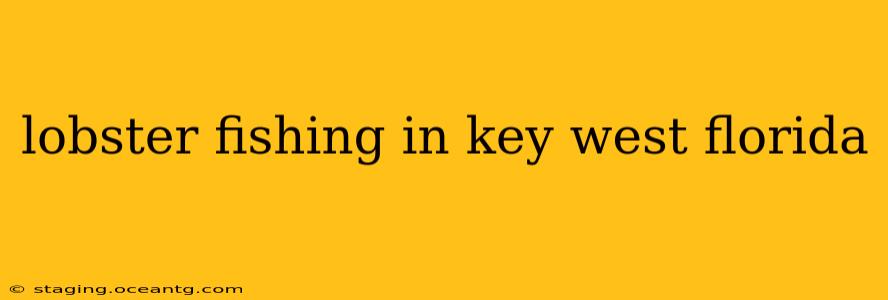Key West, the southernmost point in the continental United States, offers more than just stunning sunsets and vibrant nightlife. Beneath the turquoise waters lies a treasure trove of marine life, including the prized Florida spiny lobster. Lobster fishing in Key West is a thrilling experience, steeped in tradition and demanding skill and knowledge. This comprehensive guide explores everything you need to know about this captivating activity, from regulations to techniques, ensuring you have a safe and successful (and legal!) foray into the world of Key West lobstering.
What is the Lobster Season in Key West?
The Florida spiny lobster mini-season is a highly anticipated event, typically falling in the last two days of July. The regular lobster season follows, running from August 6th to March 31st. These dates are crucial to remember, as fishing outside these periods is strictly prohibited. Always check the Florida Fish and Wildlife Conservation Commission (FWC) website for the most up-to-date information on season dates and regulations, as they can change slightly from year to year.
What are the Regulations for Lobster Fishing in Key West?
Understanding and adhering to the regulations is paramount. Failure to comply can result in significant fines. Key regulations include:
- Size Limits: Lobsters must meet minimum and maximum size requirements. Measure from the eye socket to the end of the carapace (the body shell).
- Bag Limits: There are limits to the number of lobsters you can catch per person per day.
- Trapping Regulations: Specific regulations govern the types of traps allowed, their construction, and their placement.
- Protected Areas: Certain areas are designated as marine sanctuaries or protected zones where lobster fishing is strictly prohibited. These areas are vital for maintaining healthy lobster populations.
- Gear Requirements: Divers must carry a measuring device and possess a valid Florida saltwater fishing license.
Always consult the FWC website for the most current and detailed regulations before you go lobstering.
What is the Best Way to Catch Lobster in Key West?
There are two primary methods employed by lobster hunters in Key West:
- Free Diving/Snorkeling: This involves searching for lobsters visually in their natural habitat, often among coral reefs and rocky areas. Divers search for lobsters hiding in crevices, under ledges, and in burrows. This method is both physically demanding and rewarding.
- Trapping: Lobster traps are strategically placed on the ocean floor, baited to lure lobsters inside. This method requires knowledge of prime lobster habitats and careful placement of traps to avoid illegal placement or entanglement with other marine life.
What Kind of Gear Do You Need for Lobstering in Key West?
Essential gear for lobster fishing includes:
- A valid Florida saltwater fishing license: This is non-negotiable and can be obtained online or at authorized retailers.
- Measuring device: To ensure you're harvesting legal-sized lobsters.
- Dive gear (if free diving): Mask, snorkel, fins, and possibly a wetsuit depending on water temperature.
- Lobster trap (if trapping): Ensure it meets FWC regulations.
- Bait: Common baits include squid, fish scraps, and other readily available marine organisms.
- Gloves: Protect your hands from sharp spines and potential injuries.
- Net or a bag: To store your catch safely.
How Many Lobsters Can You Catch in Key West?
The bag limit for lobsters varies depending on the season and the method of fishing (diving or trapping). Check the FWC website for the most up-to-date bag limits. Remember that exceeding the bag limit is a serious violation.
Where is the Best Place to Go Lobstering in Key West?
The best locations for lobster fishing in Key West are generally kept under wraps by experienced lobster hunters. However, areas known for diverse marine life and rocky habitats often produce good catches. Remember that respecting marine environments and adhering to fishing regulations is paramount.
Is Lobstering in Key West Difficult?
Lobstering can be challenging, particularly free diving. It requires physical stamina, underwater navigation skills, and a keen eye for spotting lobsters in their cryptic hiding places. Trapping requires understanding of the best locations, tides, and baiting strategies. It's recommended to go with an experienced guide, especially if you're a beginner.
This comprehensive guide provides a strong foundation for understanding lobster fishing in Key West. Remember always to prioritize safety, respect marine life, and comply with all regulations. Enjoy the adventure!
